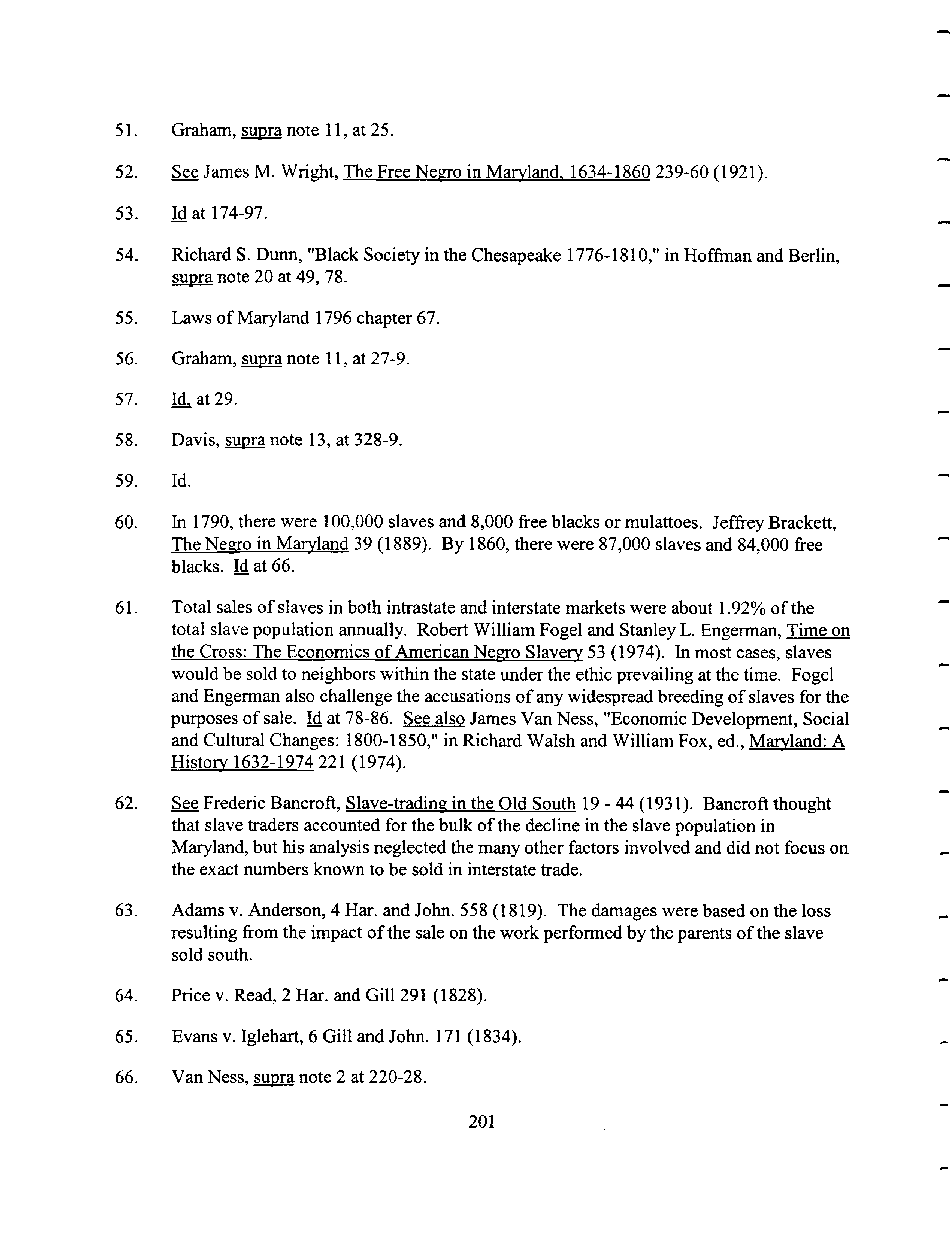|
51. Graham, supra note 11, at 25.
52. See James M. Wright. The Free Negro in Maryland. 1634-1860 239-60 (1921).
53. Id at 174-97.
54. Richard S. Dunn, "Black Society in the Chesapeake 1776-1810," in Hoffrnan and Berlin,
supra note 20 at 49, 78.
55. Laws of Maryland 1796 chapter 67.
56. Graham, supra note 11, at 27-9.
57. Id, at 29.
58. Davis, sup_ra note 13, at 328-9.
59. Id.
60. In 1790, there were 100,000 slaves and 8,000 free blacks or mulattoes. Jeffrey Brackett,
The Negro in Maryland 39 (1889). By 1860, there were 87,000 slaves and 84,000 free
blacks. Id at 66.
61. Total sales of slaves in both intrastate and interstate markets were about 1.92% of the
total slave population annually. Robert William Fogel and Stanley L. Engerman, Time on
the Cross: The Economics of American Negro Slavery 53 (1974). In most cases, slaves
would be sold to neighbors within the state under the ethic prevailing at the time. Fogel
and Engerman also challenge the accusations of any widespread breeding of slaves for the
purposes of sale. Id at 78-86. See also James Van Ness, "Economic Development, Social
and Cultural Changes: 1800-1850," in Richard Walsh and William Fox, ed., Maryland: A
History 1632-1974 221 (1974).
62. See Frederic Bancroft, Slave-trading in the Old South 19 - 44 (1931). Bancroft thought
that slave traders accounted for the bulk of the decline in the slave population in
Maryland, but his analysis neglected the many other factors involved and did not focus on
the exact numbers known to be sold in interstate trade.
63. Adams v. Anderson, 4 Har. and John. 558 (1819). The damages were based on the loss
resulting from the impact of the sale on the work performed by the parents of the slave
sold south.
64. Price v. Read, 2 Har. and Gill 291 (1828).
65. Evans v. Iglehart, 6 Gill and John. 171 (1834).
66. Van Ness, supra note 2 at 220-28.
201
�
|

